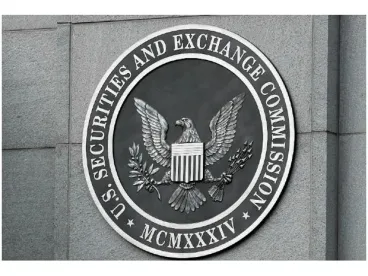On 15 February 2023, the Securities and Exchange Commission (SEC) announced a proposed overhaul of the custody framework for SEC-registered investment advisers (investment advisers). The proposed reforms—which would amend and redesignate Rule 206(4)-2 (the Custody Rule) under the Investment Advisers Act of 1940, as amended (the Advisers Act), as Rule 223-1 under the Advisers Act (the Safeguarding Rule)—would significantly expand the scope of the existing Custody Rule in respect of client accounts and client assets, substantially increase the roles of key gatekeepers in the custody ecosystem—specifically qualified custodians and independent public accountants—and mandate extensive new contractual relationships between investment advisers and these gatekeepers. If adopted as proposed, investment advisers with at least US$1 billion in regulatory assets under management (RAUM) would have 12 months to comply with this new regime, and other investment advisers would have a marginally longer time period of 18 months to comply.
The public comment period remains open until 8 May 2023.
OVERVIEW OF PROPOSED CHANGES
The proposed Safeguarding Rule would significantly expand the requirements of the Custody Rule, which was most recently amended in 2009, and according to the SEC is intended to address recent innovations in technology, advisory services, and custodial practices that create novel ways for client assets to be placed at risk of loss, misuse, theft, or misappropriation. Among other things, the proposed Safeguarding Rule proposes the following key changes to the existing custody framework:
-
Broadens Scope of Assets Covered. The proposed Safeguarding Rule would expand the scope of the existing Custody Rule beyond “client funds and securities” to include any “funds, securities, or other positions held in the client’s account.” This change would extend the rule, in particular, to require custodial solutions for assets that were not clearly covered under the Custody Rule such as financial contracts held for investment purposes; short positions; written options and collateral posted in connection with swap contracts; uncertificated privately offered securities; physical assets, including artwork, real estate, precious metals, physical commodities (e.g., wheat and lumber); liabilities on an account’s balance sheet (e.g., negative cash); and digital assets (including bitcoin and other cryptocurrencies, digital tokens, etc.).
-
Includes Discretionary Authority to Trade as Conferring Custody. The proposed Safeguarding Rule would explicitly add discretionary trading authority of client’s assets to the existing definition of “custody.” This requirement will confer investment advisers with custody over substantially all of their client accounts other than pure advisory relationships.
-
Expands and Introduces Complexity to the Qualified Custodian’s Role. A qualified custodian would be required to maintain possession or control of a client’s assets, including by participating as a condition precedent in any change in beneficial ownership of such assets. Among other things, this requirement will present challenges for the custody of certain assets, including digital assets.
-
Requires Investment Advisers to Enter Into Written Agreements With Custodians. An investment adviser would be required to enter into a written agreement with, and obtain specific representations from, each qualified custodian that maintains possession or control of a client’s assets. Specifically, the written agreement must contain representations that the qualified custodian (i) will promptly provide records relating to clients’ assets to the SEC on request, (ii) will provide quarterly account statements to the client and the investment adviser, (iii) will annually obtain and provide to the investment adviser an internal control report, and (iv) will specify the investment adviser’s agreed-upon level of authority to effect transactions in the account.
-
Requires Investment Advisers to Obtain Written Reasonable Assurances from Custodians. In addition to entering into a written agreement with each client’s qualified custodian, investment advisers would be required to obtain reasonable assurances in writing and maintain an ongoing reasonable belief that the qualified custodian (i) will exercise due care and implement appropriate measures to safeguard client assets; (ii) will indemnify the client (and will have insurance arrangements in place that will adequately protect the client) against the risk of loss in the event of the custodian’s own negligence, recklessness, or willful misconduct; (iii) will not be excused from any obligations to the client in connection with any sub-custodial arrangement; (iv) will clearly identify the client’s assets as such and segregate them from the custodian’s own assets and liabilities; and (v) will not subject client assets to any right, charge, security interest, lien, or claim in favor of the custodian.
-
Limits the Utility of the Exception for Privately Offered Securities (But Expands it to Physical Assets). As proposed, the Safeguarding Rule would broaden the Custody Rule’s exception from the obligation to maintain client assets with a qualified custodian for certain privately offered securities to also include certain physical assets (e.g., real estate), but narrow the utility of the exception by imposing several new conditions. Specifically, among other things, investment advisers seeking to rely on this exception will be required to reasonably determine and document in writing that ownership of a privately-offered security or physical asset cannot be recorded and maintained by a qualified custodian and must notify an independent public accountant within one business day of any purchase, sale, or transfer of such assets (and receive a prompt verification of such transaction from the independent public accountant).
-
Expands the Availability of the Audit Provision Beyond Pooled Vehicles. The proposed Safeguarding Rule would also expand the availability of the Custody Rule’s existing audit provision (which is an exception from the surprise examination requirement) to all “entities” that undergo a financial statement audit (rather than only “pooled investment vehicles”). The proposal includes pension plans, retirement plans, college savings plans, and others as examples of entities for which this provision may be applicable. Notably, for investment advisers to individuals, including investment advisers participating in wrap programs, the exception does not include accounts of natural person clients.
-
Exception from the Surprise Examination Requirement for Custody Solely because of Discretionary Authority or SLOA. The proposal includes additional limited exceptions from the surprise examination requirement for client accounts where the investment adviser has custody solely (i) pursuant to a standing letter of authorization (SLOA); or (ii) because it has discretionary authority with respect to client assets if the assets are maintained with a qualified custodian and discretionary authority for the account is limited to instructing the qualified custodian to transact in assets that settle exclusively on a delivery versus payment (DVP) basis.
-
Recordkeeping/Form ADV. The SEC also proposed corresponding amendments to Rule 204-2 under the Advisers Act that would require investment advisers to keep more detailed records of trade and transaction activity, and to Item 9 of Form ADV Part 1A, and the corresponding sections of Schedule D, for an investment adviser to provide information about its practices to safeguard assets and to provide additional data.
KEY TAKEAWAYS AND OPEN QUESTIONS FOR INVESTMENT ADVISERS REGARDING THE PROPOSAL
Only SEC-Registered Investment Advisers are Subject to the Proposed Safeguarding Rule
As with the Custody Rule, the proposed Safeguarding Rule would apply to investment advisers registered, or required to be registered, with the SEC. As a result, exempt reporting advisers would not be required to comply with the rule. Similarly, unregistered investment advisers, including family offices, would not be subject the proposed requirements. All investment advisers, however, would still have fiduciary obligations to clients, including a duty of care with respect to monitoring service providers.
For non-U.S. SEC-registered investment advisers, the SEC has proposed to maintain the existing framework. Specifically, the SEC would continue to take the position that most of the substantive provisions of the Advisers Act do not apply with respect to the non-U.S. clients (including funds) of an SEC-registered offshore investment adviser. By contrast, for an investment adviser whose principal office and place of business is in the United States (onshore investment adviser), the Advisers Act and rules thereunder, including the proposed Safeguarding Rule, would apply with respect to the investment adviser’s U.S. and non-U.S. clients.
The Compliance Burdens Would be Extensive and the Compliance Period Very Brief
If adopted as proposed, large investment advisers (with over US$1 billion in RAUM) will have only one year from the effective date (which would be 60 days after the date of the final rule’s publication in the Federal Register) and smaller investment advisers (with up to US$1 billion in RAUM) will have 18 months from the effective date to comply. To point out the obvious, this is an incredibly short compliance period that is likely to create significant operational and compliance challenges for investment advisers as well as for the key gatekeepers implicated by the proposal.
The Proposed Safeguarding Rule Expands the Types of Assets Covered by the Custody Rule
The Safeguarding Rule would effectively cover all assets in an advisory account over which an investment adviser has custody. The proposed rule defines “assets” as “funds, securities or other positions held in a client’s account.” Practically, this would include digital assets (regardless of their status as “funds” or “securities”), real estate, art, precious metals, physical commodities, and similar physical assets, uncertificated privately offered securities, short positions, written options and collateral posted in connection with a swap. Liabilities on an account’s balance sheet would also be treated as “assets” for this purpose, including negative cash. In its rationale for this expansion, the SEC noted that the investment adviser’s fiduciary duty applies to the entire relationship with its client, regardless of whether a particular holding in a client account meets the definition of funds or a security. While this expansion has received a lot of attention in the press particularly with respect to digital assets, importantly too, this would clarify and put an end to a divergence in the industry practice with respect to the custody of real estate funds by investment advisers while creating the need for custodial solutions for an asset class outside of the traditional securities custody framework.
As noted above, if the Safeguarding Rule is adopted as proposed, whether a digital asset is a fund or a security would no longer be relevant to determine whether the rule applies, as the scope of “assets” will be sufficiently broad to pick up digital assets. Accordingly, digital assets would need to be held by a qualified custodian. This may pose practical challenges for investment advisers given that the market for custodial services for digital assets has not yet fully developed, and that qualified custodians may be unwilling to take possession or control of such assets in light of the additional assurances that investment advisers must obtain from custodians under the proposed Safeguarding Rule.
The Proposed Safeguarding Rule Confers Custody on an Investment Adviser with Discretionary Authority of Client Accounts and Assets
While preserving the existing framework of custody under the current Custody Rule, the proposed rule explicitly adds discretionary authority to trade within the definition of custody. With this expansion, an investment adviser would be deemed to have custody even when it does not have the authority to cause the client’s custodian to transfer assets to third parties. For example, certain investment advisers participating in discretionary model delivery programs without any execution authority would be subjected to the requirements of the proposed Safeguarding Rule merely by having discretionary authority under the applicable model delivery program.
If adopted as proposed, the universe of investment advisers subject to the rule would greatly expand and substantially every client relationship of an institutional investment adviser or private fund sponsor (other than pure advisory relationships) would be subject to the rule (other than with respect to their registered funds and non-discretionary model delivery programs). It would also introduce complexity in arrangements where multiple advisers have discretion over client assets (including sub-advisers and investment advisers managing only a sleeve of a client’s account).
A Qualified Custodian Must Maintain Possession or Control of Client Assets Pursuant to a Written Agreement
The proposed rule would require that an investment adviser maintain client assets with a qualified custodian that has “possession or control” of those assets. “Possession or control” is defined as “holding assets such that the qualified custodian is require to participate in any change in beneficial ownership of those assets, the qualified custodian’s participation would effectuate the transaction involving the change in beneficial ownership, and the qualified custodian’s involvement is a condition precedent to the change in beneficial ownership.”1 A qualified custodian is expected to implement appropriate measures to safeguard assets from theft, misuse, misappropriation, or other similar types of loss based on the asset type and manner in which ownership is evidenced. For example, a physical coupon bond, a physical security certificate, or a physical commodity, such as gold, may be required to be kept in a vault. Conversely, an investment that is evidenced in electronic book-entry form, such as an exchange-traded note, could be maintained in line with robust cybersecurity standards.
This requirement would likely present challenges in connection with digital assets, particularly since it may be difficult for a custodian to demonstrate that it has “exclusive possession or control” of the assets in light of the characteristics of some digital assets that are distinct from those of traditional assets. For example, because any person that possesses a private key relating to a digital asset can transfer ownership of the asset, an argument could be made that exclusive possession or control cannot be achieved. The SEC indicated that exclusive possession or control is not the only way that a custodian could demonstrate it meets the definition of having “possession or control.” As an alternative, the proposed definition could include situations where the custodian is needed to change the beneficial ownership of the asset, even if it could not affect the change in ownership acting alone. For example, a custodian could have possession or control of a digital asset if it generates and maintains private keys for the wallet holding a digital asset in a manner such that the investment adviser is unable to change beneficial ownership of the asset without the custodian’s involvement.
Qualified Custodians Must Meet Certain Requirements
The proposed Safeguarding Rule would largely retain the definition of qualified custodian relating to banks and savings associations. The proposed rule would, however, require that a qualifying bank or savings association hold client assets in a segregated account in which client assets are easily identifiable and clearly segregated from the bank’s assets in order to qualify as a qualified custodian. This change seeks to protect such assets from creditors of the bank or savings association in the event of its insolvency or failure. The recent collapse of regional banks (e.g., Silicon Valley Bank and Signature Bank) may embolden the SEC to pursue this regulatory change to the custody landscape.
The proposed Safeguarding Rule would create seven new conditions for a foreign financial institution (FFI) to serve as a qualified custodian for client assets. To qualify the FFI must be: (i) incorporated or organized under the laws of a country or jurisdiction other than the United States, provided that the investment adviser and the SEC are able to enforce judgments, including civil monetary penalties, against the FFI; (ii) regulated by a foreign country’s government or regulatory authority as a banking institution, trust company, or other financial institution that customarily holds financial assets for its customers; (iii) required by law to comply with anti-money laundering and related provisions similar to those of the Bank Secrecy Act and regulations thereunder; (iv) holding financial assets for its customers in an account designed to protect such assets from creditors of the FFI in the event of its insolvency or failure; (v) having the requisite financial strength to provide due care for client assets; (vi) required by law to implement practices, procedures, and internal controls designed to ensure the exercise of due care with respect to the safekeeping of client assets; and (vii) not operated for the purpose of evading the provisions of the proposed Safeguarding Rule.
Required Written Agreements with Qualified Custodians
In a significant departure from current industry practice, the Safeguarding Rule would require investment advisers to enter into direct contractual agreements with qualified custodians that contain certain mandatory provisions that the investment adviser must reasonably believe to have been implemented. Contracts between investment advisers and qualified custodians would be required even where clients engage their custodians directly and without regard to the terms in the client’s custodial arrangements. Specifically, the written agreement must contain representations that the qualified custodian will (i) upon request, promptly provide records relating to clients’ assets it holds to the SEC or an independent public account engaged for purposes of complying with the proposed Safeguarding Rule; (ii) provide account statements to the client and the investment adviser at least quarterly; (iii) obtain and provide to the investment adviser an internal control report that includes an opinion of an independent public accountant as to whether the controls have been placed in operation as of a specific date, are suitably designed, and are operating effectively to meet control objectives relating to custodial services, at least annually; and (iv) specify the investment adviser’s agreed-upon level of authority to effect transactions in the account. The practical effect of including discretionary trading within the meaning of “custody” is that investment advisers participating in wrap programs sponsored by platforms that have no direct advisory relationship with third-party advisers or their underlying clients and where the investment adviser may not always know the identity of an end-client’s custodian(s), for example, would be required to implement written agreements covering thousands of client accounts.
If the investment adviser or its related person is the qualified custodian, the written agreement would be entered between the investment adviser and the client. Furthermore, the proposed rule also retains the current Custody Rule’s approach of requiring that the independent public accountant that prepares the internal control report verify that client assets are reconciled to a custodian other than the investment adviser or its related person, and that the independent public accountant is registered with, and subject to regular inspections by, the Public Company Accounting Oversight Board as of the commencement of the engagement period, and as of each calendar year-end. Several of the elements proposed to be required in custody agreements would likely pose challenges for investment advisers seeking to provide clients with exposure to digital assets. For example, as a general business practice and in light of the nature of some digital assets, a custodian may be reluctant to agree to indemnify an advisory client from losses arising out of, or in connection with, the custodian’s execution or performance, particularly when the agreement requires a negligence standard of care (compared to a gross negligence standard of care, which would be more favorable to the custodian) when its own agreement with the advisory client does not require it to do so. Accordingly, if adopted as proposed, the rule could discourage qualified custodians from agreeing to provide custody services for digital assets or other assets, thereby limiting the options available to investment advisers.
Investment Adviser’s Obligation to Obtain Reasonable Assurances in Writing from Qualified Custodian
In addition to the written agreement requirement, the proposed Safeguarding Rule requires an investment adviser to obtain reasonable assurances in writing from a qualified custodian that the qualified custodian will: (i) exercise due care and implement appropriate measures to safeguard the client’s assets; (ii) indemnify the client when its negligence2 , recklessness, or willful misconduct results in the client’s loss; (iii) not be relieved of its responsibilities to the client through sub-custodial arrangements; (iv) clearly identify and segregate the client’s assets from its proprietary assets; and (v) keep client assets free from any right, charge, security interest, lien, or claim in favor of the custodian, unless authorized in writing by the client.
An investment adviser must also demonstrate that it has maintained an ongoing reasonable belief that the qualified custodian is complying with the client protections for which the investment adviser obtained reasonable assurances, by including covenants in the written agreements with the custodian to provide periodic confirmations of adherence. If adopted as proposed, investment advisers would also need to consider representations, warranties, and covenants requiring the custodian to periodically provide, or provide upon request, documentation for the investment adviser’s review and requiring notification of any breach of the applicable covenants or the custodian’s compliance with the agreement.
The practical impediments to establishing contracts between investment advisers and qualified custodians will be enormous. Given the current gross negligence standard that many qualified custodians have negotiated in their agreements with their clients, such custodians may be reluctant to agree to indemnify a client for losses that arise due to the custodian’s simple negligence, in addition to requiring such custodians to have insurance arrangements in place that will adequately protect the client. If adopted as proposed, the rule could discourage qualified custodians from agreeing to provide custody services for certain types of assets, including digital assets, thereby limiting the options available to investment advisers and their clients. In addition, the additional expense and challenge to custodians of entering into these agreements, and of obtaining and maintaining insurance to protect them under the simple negligence standard, may likely result in a smaller pool of qualified custodians from which clients could choose from, and an overall increased cost of engagement for clients.
Privately Offered Securities
Consistent with the current Custody Rule, the proposed rule does not require that privately offered securities (like interests in portfolio companies or loan documentation) be held at a qualified custodian, provided that certain conditions are met. The exception has been expanded under the proposed Safeguarding Rule to include physical assets, however, the conditions for an investment adviser to avail itself of the exception have been supplemented and would require that the investment adviser: (i) reasonably determines in writing that ownership of a privately offered security or physical asset cannot be recorded and maintained by a qualified custodian in a manner in which a qualified custodian can maintain possession, or control transfers of beneficial ownership, of such assets; (ii) reasonably safeguards the assets from loss, theft, misuse, misappropriation, or the investment adviser’s financial reverses (including the investment adviser’s insolvency); (iii) initiates a written agreement between itself and an independent public accountant, such that the accountant: (a) verifies any purchase, sale, or other transfer of beneficial ownership of such assets promptly upon receiving notice from the investment adviser, and (b) notifies the SEC within one business day upon finding any material discrepancies during the course of performing its verification; (iv) notifies the independent public accountant engaged to perform the verification within one business day of any purchase, sale, or transfer of beneficial ownership of such assets; and (v) verifies the existence and ownership of each of the client’s privately offered securities or physical assets not maintained with a qualified custodian during the annual surprise examination or as part of a financial statement audit.
An analysis of the asset and an understanding of the available custodial market would be required by the investment adviser in order for it to make a reasonable determination whether a privately offered security or physical asset could be maintained by a qualified custodian. The SEC notes in the proposed rule that an investment adviser’s reasonable determination depends on the facts and circumstances in issue and should evolve over time as assets and the custodial industry change, “allowing the proposed rule to remain evergreen.”3
The proposed rule does not specify the frequency with which an investment adviser must make the reasonable determination regarding a particular privately offered security or physical asset. The SEC notes that this would depend on the particular asset and the facts and circumstances related to such asset, and any indicators of the developing custodial market for such assets. For example, where an annual assessment may be reasonable for an asset for which there have not been indicators of development in the custodial market, an annual assessment may not be reasonable in the case that active development for custodial services has been well publicized. In effect, these conditions would require perpetual analysis and documentation by investment advisers for assets falling within this exception. In any event, it would be prudent for an investment adviser to develop policies and procedures for conducting the analysis and to consider designating the necessary frequency, which may vary by asset.
To rely on the exception, the investment adviser would be required to reasonably safeguard any privately offered securities or physical assets that are not maintained with a qualified custodian from loss, theft, misuse, misappropriation, or the investment adviser’s financial reverses, including the investment adviser’s insolvency. The proposed rule indicates that investment advisers custodying assets within the exception should look to reasonable commercial standards to meet its obligation to reasonably safeguard an asset. The SEC describes potential ways to reasonably safeguard privately offered securities, which may include, among other things, segregation of duties related to the asset within the investment adviser (e.g., different persons would be responsible for recording investments, buying and selling securities, and holding certificate or other legal records evidencing ownership of the securities) and regular review and reconciliation of the investment adviser’s records regarding the ownership of the securities. Similarly, for physical assets, an investment adviser may need to adapt the methods used to safeguard each particular physical asset based upon the reasonable commercial standards for the asset. Examples of measures for safeguarding physical assets may include, storage in a secure facility or vault, separation of duties for movement or transfer of assets, recordkeeping and reconciliation, smoke detection and fire suppression systems, and insurance coverage for any custody-related losses incurred by its clients.
The proposed rule also requires that investment advisers segregate client assets from the investment adviser’s assets in circumstances where the investment adviser has custody. The proposed rule requires that the client assets custodied by the investment adviser: (i) be titled or registered in the client’s name or otherwise be held for the benefit of the client, (ii) not be commingled with assets of the investment adviser or related persons of the investment adviser, and (iii) not be subject to any right, charge, security interest, lien, or claim of any kind in favor of the investment adviser, its related persons, or its creditors, except to the extent agreed to or authorized in writing by the client.
Surprise Examination Exception
The proposed Safeguarding Rule would create new exceptions to the surprise examination requirement in certain limited circumstances where investment advisers have custody.
-
Audit Provision. The proposed rule would expand the availability of the audit provision from limited partnerships, limited liability companies and other types of pooled investment vehicles clients under the Custody Rule to any advisory client entity whose financial statements can be audited.
-
Discretionary Authority. The proposed Safeguarding Rule contains an exception from the surprise examination requirement if the investment adviser’s sole basis for having custody is discretionary authority with respect to such assets, provided this exception applies only for client assets maintained with a qualified custodian and for accounts where the investment adviser’s discretionary authority is limited to instructing its client’s qualified custodian to transact in assets on a DVP basis. In DVP transactions, custodians are generally under instruction to transfer assets out of a client’s account only upon corresponding transfer of assets into the account. The SEC has acknowledged the minimized risk to clients that arises from discretionary authority given on a DVP basis and therefore proposed this exception to the surprise examination requirement to mitigate the costs and new burdens created for investment advisers, particularly smaller investment advisers, as a result of the proposed expanded scope of the definition of custody.
-
Standing Letters of Authorization. The proposed rule also contains an exception from the surprise examination requirement if the investment adviser has custody of client assets solely because of an SLOA. The proposed rule defines SLOA as an arrangement among the investment adviser, the client, and the client’s qualified custodian in which the investment adviser is authorized, in writing, to direct the qualified custodian to transfer assets to a third-party recipient on a specified schedule or from time to time. An SLOA may include authorizations for one-time wires out of an account. In such an arrangement, the qualified custodian may not be a related person of the investment adviser.
NEXT STEPS
The SEC is requesting comment on the proposed Safeguarding Rule be submitted by 8 May 2023. Interested investment advisers, gatekeepers, and other industry participants should consider submitting comments discussing their views regarding the proposed rule, including the matters described above.
FOOTNOTES
1 Page 62 of SEC Release No. IA-6240; File No. S7-04-23 (Safeguarding Rule Release).
2 The required standard under the proposal is negligence, rather than gross negligence.
3 Safeguarding Rule Release at 135–36.









 />i
/>i

